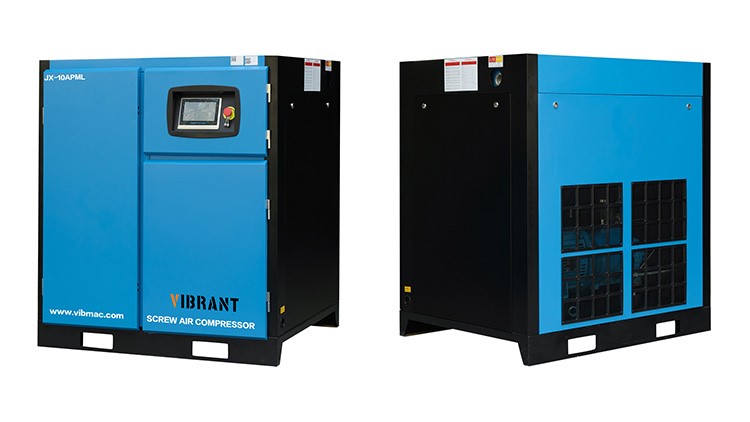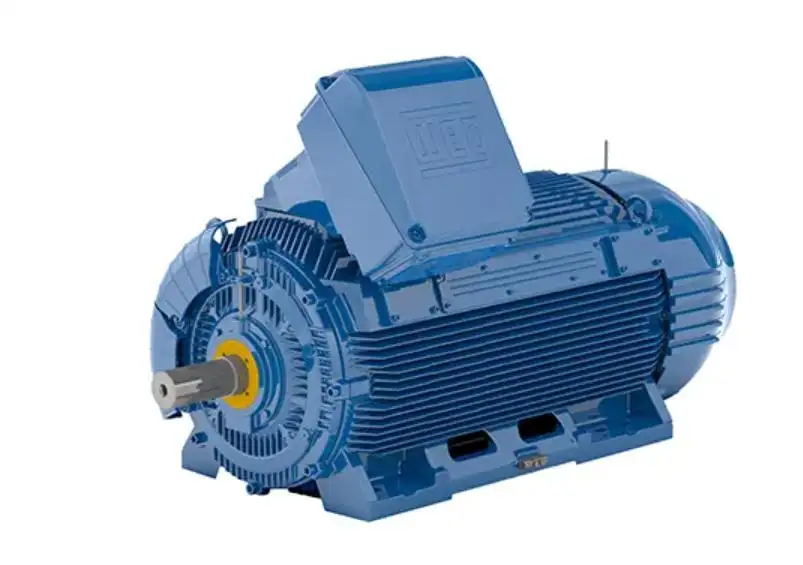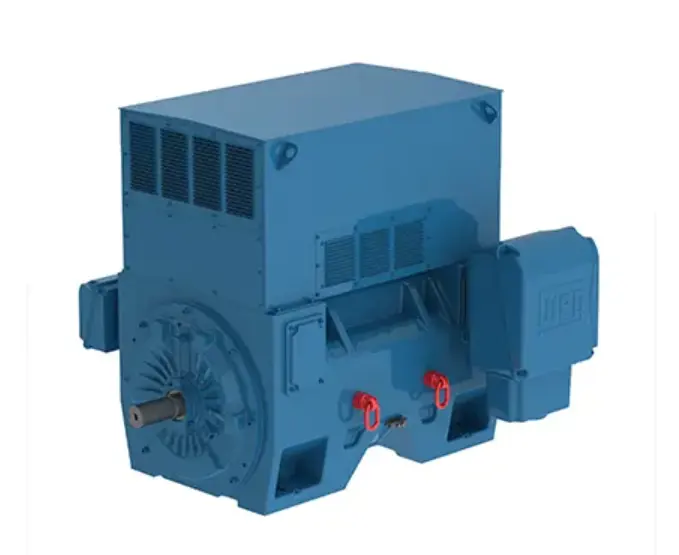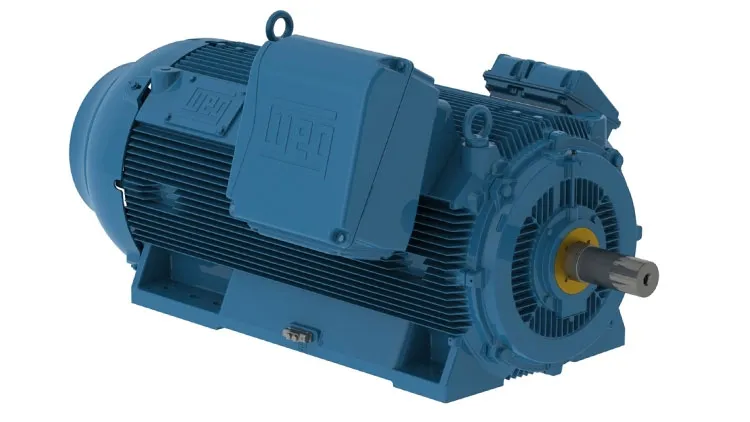Power Up Efficiency and Boost Performance
The rotary screw air compressor is a go-to choice whenever a factory or workshop needs steady, clean compressed air. Because it runs nonstop, you can lean on it for production lines, wrapping machines, and even HVAC systems. Inside every VIBRANT rotary screw unit sit two interlocking helical rotors that turn in opposite directions, squeezing air quietly and steadily. That smooth motion cuts energy waste and squeezes out more air per kilowatt than older designs.
Where VIBRANT shines is in rugged build, lower power bills, and upkeep that rarely pulls a technician off the floor. Its Permanent Magnet (PM) motor delivers constant torque, runs cooler, and lasts longer, so breakdowns stay rare. With much less noise and shake, the What is the Screw Compressor Working Principle? The machine fits right into an office plant or any sound-sensitive space.
What is a Screw Compressor?
A screw compressor is a positive-displacement machine that squeezes air between two interlocking screws (rotors). Because the rotors keep turning together, the compressor delivers nearly the same pressure from start to finish. This steady output makes it the go-to choice for factories that can't afford pressure swings.
Screw Compressors Fall into Two Broad Families:
- Oil-injected screw compressors
- Oil-free screw compressors
Each design has its way of adding or separating oil, and that's what we break down below.
How Does a Screw Compressor Work?
What is the Screw Compressor Working Principle? The heart of a screw compressor is simple: the volume of air shrinks as the screws rotate. Step by step, here is how that happens:
1. Air Intake Via Inlet Valve
Fresh air first passes through the inlet valve and a high-efficiency filter that traps dust and pollen. Clean, dry air is the best start for any compressor, and these filters help protect the whole system.
2. Compression in the Air End
Next, filtered air slides into the compression chamber, often called the air end. Inside sit the male rotor with fewer lobes and the female rotor with more grooves.
-Male Rotor: Spins faster, making fewer full turns.
- Female Rotor: Turns slightly slower, filling the gaps.
As the rotors entwine, air is caught in the pockets between them. Because the pockets shrink as they move, the trapped air compresses until it exits the unit at high pressure.
This method is called positive displacement compression. Unlike piston compressors, it has no valves or cylinders and runs smoothly and quietly.
Oil Injection (For Oil-Injected Models Only)
In oil-flooded screw units, engineers inject oil to:
- Lubricate the counter-rotating rotors
- Cool the hot compressed air
- Seal small gaps for tighter pressure
Afterward, a separator filter removes most of the oil, an aftercooler cools it again, and the clean oil is recycled. Oil-free models skip the step and depend instead on hard coatings and wear-resistant materials so they can run without any liquid lube.
Discharge Through the Outlet Valve
Once cooled, the compressed air passes through the discharge valve and may move through an aftercooler to lose extra heat. Removing that heat cuts downstream moisture and helps tools and machines last longer.

Screw Compressor Operation: Oil-Injected Vs. Oil-Free
Oil-Injected Screw Compressors
These units are the workhorses of heavy industry. Key advantages include:
- Excellent sealing and cooling
- Long service life under tough loads
- Maintenance costs that stay reasonable
Best for: manufacturing, CNC, automotive, and metalworking.
Oil-Free Screw Compressors
These machines guard against even tiny traces of oil. They offer:
- Purity that meets strict rules
- Medical-grade clean air
- A higher front-end cost
Best for: pharma plants, food and beverage lines, and electronics fabs.
Types of Screw Compressors By Drive & Stage
Screw compressors come in different setups. Here are the main ones:
1. Fixed Speed Vs. Variable Speed Drive (VSD)
- Fixed Speed: Runs at one speed and costs less if the load is even.
- VSD Screw Compressor: Changes speed to match air demand and uses less energy.
2. Single-Stage Vs. Two-Stage
-Single-Stage: Presses air once. Easier to service.
-Two-Stage: Does the job twice for higher pressure and better fuel use.
3. Drive Mechanism
- Belt-Driven: Low upfront cost, lets you change speed easily
-Gear-Driven: Sturdy parts give exact timing.
- Direct-Drive: Few belts or pulleys make it very efficient and need little care.
Advantages of Screw Compressors
Workers pick rotary screw machines because they offer:
- Smooth, constant airflow-no jerky pulses.
- Quiet operation.
- Small footprint yet big output.
- High volumetric efficiency.
- Tough build that rarely stops.
- VSD models trim electric bills.
- Fewer moving parts mean easier upkeep.
Volumetric Efficiency & Rotor Dynamics
Screw compressors seal air with oil or tight gaps, letting most machines beat 90% volumetric efficiency. That, plus their steady rotation, keeps every cycle strong.
The screw compressor has a helical rotor shape that cuts down pressure loss and stops air leaks. Inside, the compression chamber gets smaller step by step, squeezing the air quietly and swiftly. The tiny gap between the male and female rotors measures only a few microns. In oil-injected models, the lubricant wedges into that space, sealing it better and pulling heat away.
Maintenance Tips for Long-Term Performance
Keep up with the basics and your screw compressor stays reliable and easy on the budget.
- Change the oil 2000-4000 run hours on oil-injected units.
- Wipe or replace filters once a month.
- Look over the air end for scratches or loose parts.
- Scan the control panel; note odd heat or pressure.
Let water out of the air receiver tank on schedule.
Why Pick a Screw Compressor?
When you need steady air, low noise, and less downtime, a screw compressor steps up.
It Fits Perfectly in:
- 24-hour plants
- Crowded equipment rooms
- Sensitive temp jobs
- Cost-saving, green operations.
Conclusion:
So What is the Screw Compressor Working Principle? Simply put, it traps air between two twisted rotors, shrinks that space, and sends out high-pressure air in an even stream. Thanks to its smart design, this compressor type keeps factories, hospitals, and mines humming. Need help sizing the right model for your shop? Reach out to VIBRANT experts today.









